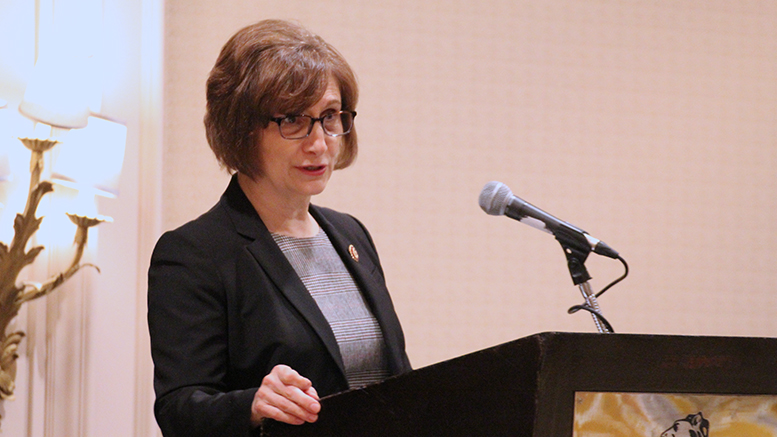It doesn’t matter whether a college is in a city or rural area, in a wealthy section of town or in a poor part, they all serve students who are facing food and housing insecurities. Just ask Kathryn Jeffery. She has served as a leader at several community colleges in California over her career, and at each one she has had experiences with students who struggle to find a meal or a home.
During a panel on Wednesday that opened the American Association of Community Colleges‘ (AACC) Fall Meeting in Arlington, Virginia, Jeffery recalled that when she was a vice president of rural Columbia College, she learned of a student who slept in a hammock at night on the school grounds because his commute home was too long to travel back and forth each day. She allowed him to sleep in his car and to use the college’s restrooms at night until the school could find better arrangements for him.
When she later was president of Sacramento City College, a student approached Jeffery one day to tell her that he slept under a nearby overpass.
“And there are many other students like me,” she recalled the student saying. “That really got my attention.”
When Jeffery become superintendent/president of Santa Monica College (SMC) in 2016, she said she didn’t expect to see an issue with hunger and housing. After all, this was a city known for movie stars and swimming pools. But, again, she saw students who struggled with getting a meal and finding a place to sleep.
How CAA fits in
The conversation about student hunger and housing insecurity kicked off with Rep. Suzanne Bonamici (D-Oregon), who gave meeting attendees a brief overview of the Democrats’ bill to reauthorize the Higher Education Act. She noted that the legislation, which the House Education and Labor Committee passed last month, would address a wide array of issues, from public service loan forgiveness, to extending Pell grants to eligible inmates. It also has provisions to help students who are one step away from dropping out because of life issues, such as finding affordable childcare or even a flat tire, she said.

Rep. Suzanne Bonamici (D-Oregon) outlines the College Affordability Act.
“In my state, childcare can cost as much as college,” said Bonamici, noting that the College Affordability Act aims to help with childcare and also would provide emergency grants for small, unexpected expenses that can derail a college student. She added that an amendment was added to the bill during markup to better coordinate services for students eligible for public benefits.
“This legislation is really going to make a difference in the lives of your students,” Bonamici said.
House Democrats hope to have a floor vote on CAA by the end of the year.
Food pantries and more
In the panel discussion that followed, leaders of rural and urban colleges outlined what their institutions are doing to help students, which often include leveraging local partnerships and even relying on students themselves. Pam Eddinger, president of Bunker Hill Community College in Boston, noted that when she came to the college she noticed that it typically bought much more food for events than was needed. She realized that it was intentional, as the remaining food was provided to students.
At SMC, students started a program called FLVR that provided food vouchers to students, which expanded quickly, Jeffery said. The college is now consolidating its 10 food pantries on campus into one store-like center that also will include a clothes closet.
Dabney S. Lancaster Community College in rural Virginia runs a similar center that provides food and professional clothes that students can use for job interviews, said President John Rainone. He noted that faculty and partners in the community have stepped up with activities to supply the center, called the Cubby Closet.
The college also is exploring ways to help students with housing and transportation, Rainone added.
Although more of the public has become aware of food and housing insecurity among students, community colleges must continue to advocate to find ways to address these challenges, the panel said. Too often, lawmakers think the only college costs students face are tuition and fees, Jeffery said. They don’t realize that food, housing, transportation and other expenses are significant parts of the cost, she said.

